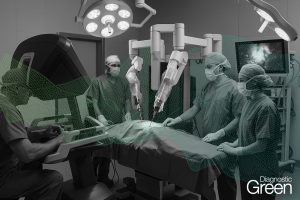Free vascularized medial femoral condyle (MFC) bone grafts can lead to increased vascularity of the proximal pole and restore scaphoid architecture in scaphoid nonunions. The intraoperative perfusion assessment of the bone graft is challenging because the conventional clinical examination is difficult. Indocyanine green (ICG) angiography has previously been shown to provide a real-time intraoperative evaluation of soft tissue perfusion in reconstructive surgery. The present study investigated the utility of ICG angiography in patients treated with a free medial femoral condyle graft for scaphoid nonunions.
Methods: We performed a retrospective analysis of patients with scaphoid nonunions, in which ICG angiography was used intraoperatively for perfusion assessment. The medical records, radiographs, intraoperative imaging, and operative reports of all patients were reviewed. Intraoperative ICG dye was administered intravenously, and laser angiography was performed to assess bone perfusion. The scaphoid union was examined using postoperative CT scans.
Results: Two patients had documented osteonecrosis of the proximal pole at the time of surgery. Four patients received a nonvascularized prior bone graft procedure, and a prior spongiosa graft procedure was performed in one patient. The mean time from injury to the MFC bone graft surgery was 52.7 months, and the mean time from prior failed surgery was 10.4 months. Perfusion of the vascular pedicle of the MFC and the periosteum could be detected in all patients. In two patients, even perfusion of the cancellous bone could be demonstrated by ICG angiography. Following transplantation of the bone graft, patency of the vascular anastomosis and perfusion of the periost were confirmed by ICG angiography in the assessed cases. No additional surgery regarding a salvage procedure for a scaphoid nonunion advanced collapse was necessary for the further course.
Conclusion: ICG-angiography has shown to be a promising tool in the treatment of scaphoid nonunion with medial femoral condyle bone grafts. It enables intraoperative decision making by assessment of the microvascular blood supply of the periosteum and the vascular pedicle of the MFC bone graft. Further studies need to evaluate the impact on union rates in a long-term follow-up.




